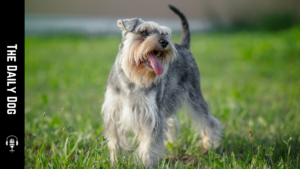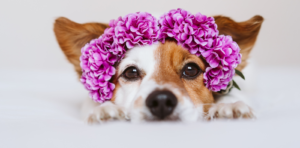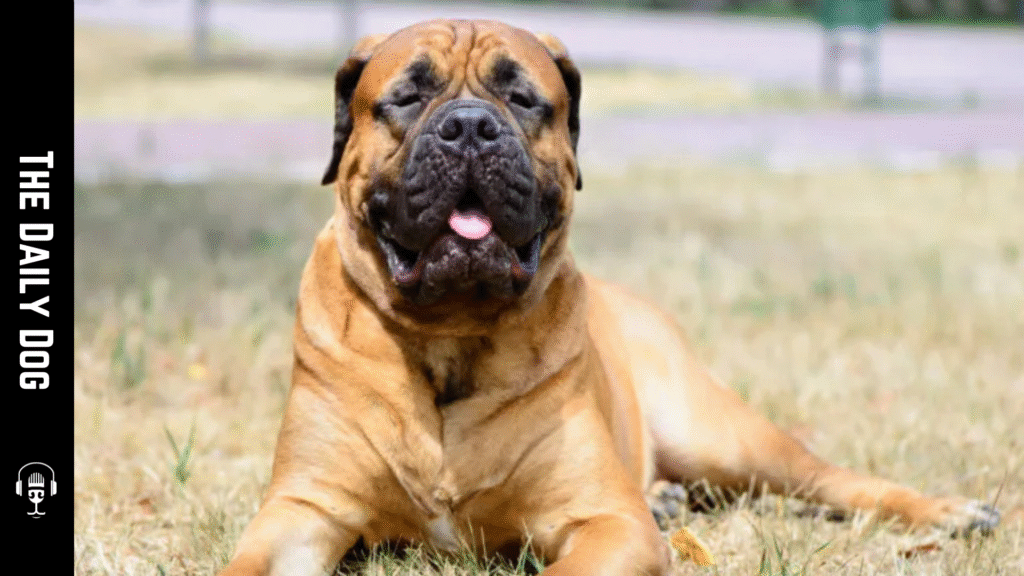Few breeds have sparked as much curiosity and debate as the Bandog. Born from a long tradition of working dogs and strategic crossing, the Bandog stands at the intersection of power, resilience, and family-friendly temperament. This post examines the Bandog’s origins, core traits, care requirements, training considerations, and the realities of ownership in today’s dog-owning landscape. By understanding the Bandog’s lineage and current role, prospective owners can make informed decisions that align with their lifestyle, environment, and goals for a four-legged partner.
A lineage shaped by needs and pragmatism
The Bandog’s history is inseparable from practical needs. In many regions, farmers, guards, and guardians sought a canine that could perform multiple roles: deter intruders, provide protective presence, and work alongside people in demanding tasks. The resulting dogs were not the product of a single breed’s rigid standard but rather a calculated blend designed to emphasize certain traits: size and muscularity for deterrence and strength, a keen bite and tenacity for task performance, and a temperament that could be balanced with careful socialization.
What makes the Bandog unique is not a fixed breed in the rigid sense, but a concept of selective breeding. Typically, Bandogs are created by crossing one or more mastiff-type dogs with breeds that contribute drive, agility, and problem-solving ability. The exact mix can vary, leading to a wide spectrum of appearances, from sturdy, broad-chested dogs with short coats to more athletic, leaner builds. This variability is part of the Bandog’s identity, offering versatility to match different environments and owner expectations. Yet with this variability comes responsibility: breeders and owners alike must prioritize health, temperament, and sound training practices to ensure a canine partner that is safe, reliable, and well adjusted.
Physical presence and notable attributes
One of the most immediately striking aspects of the Bandog is its imposing silhouette. Many Bandogs display a powerful, muscular frame with a broad chest, sturdy limbs, and a confident stance. The coat type can range from short and sleek to slightly longer in some lines, which can influence grooming needs. Color variations are diverse as well, reflecting the mix of lineages involved in a given dog. Beyond the surface, the Bandog’s physical makeup typically supports durability and endurance, traits that are useful in guarding, farm work, and protective tasks in varied climates.
Despite their formidable exterior, Bandogs are not aggressive by default. A well-bred and well-socialized Bandog often exhibits steady, even-tempered behavior with a calm demeanor in familiar environments. The temperament is often described as loyal, protective, and people-oriented, with a strong willingness to please when properly trained. Because of their size and strength, owners must commit to consistent leadership, positive reinforcement training, and early socialization to ensure a dog that is reliable around children, visitors, and other pets.
Temperament that blends protection with companionship
A hallmark of the Bandog is its balancing act between watchdog instincts and affectionate companionship. Many Bandogs display an intuitive sense of alertness, a vigilant watchfulness that makes them excellent deterrents against potential threats. Yet this protective demeanor is tempered by a deep bond with family members. In a trusted household, Bandogs tend to be affectionate, patient, and responsive, enjoying interactive play and steady routines.
For families with children, the Bandog can be a loyal, gentle presence when properly trained and socialized from a young age. As with any large-or-strong breed, supervision and risk assessment are essential, especially around toddlers or children who may not understand appropriate boundary-setting. Responsible ownership includes teaching children how to read a dog’s signals and respect a dog’s space, as well as providing age-appropriate activities that reinforce positive interactions.
Intelligence, trainability, and the path to reliable behavior
Intelligence is a strength for many Bandogs, a trait that supports their multiplatform utility—from guarding to obedience work to family-friendly companionship. They typically respond well to structured training environments that emphasize consistency, fairness, and motivation. Because Bandogs are not a single standardized breed, training experiences can vary significantly based on lineage, early socialization, and the quality of instruction.
A practical training philosophy for Bandogs centers on positive reinforcement, clear boundaries, and gradual exposure to varied environments. Early socialization, introducing the dog to a range of people, pets, surfaces, sounds, and experiences, helps reduce uncertainty and promotes confident behavior. Consistency in rules and routines helps the dog understand expectations, reducing frustration that can trigger undesirable responses. Because Bandogs can be physically powerful, ongoing reinforcement of impulse control, recall, and leash manners is crucial, especially in outdoor settings or around distractions.
Health considerations and responsible sourcing
As with any mixed or crossbred dog, Bandogs can inherit health issues from their parent lineages. Prospective owners should prioritize health testing and breeder transparency. Common concerns in larger, muscular breeds include hip and elbow dysplasia, certain cardiac considerations, and issues related to bone and joint development. Regular veterinary care, a balanced diet, appropriate exercise, and preventive health measures are essential to maintaining long-term vitality.
Responsible breeding practices are especially important with Bandogs due to their varied genetic makeup. Ethical breeders will focus on establishing predictable temperaments, robust health clearances, and appropriate age at mating, along with socialization plans for puppies. Potential buyers should request health screening results, ask about lineage history, and meet the puppy’s parents if possible. A reputable breeder will be open about challenges, provide guidance on care, and support new owners as their dog grows.
Nutrition, exercise, and daily routines
The Bandog’s energy levels can vary, but a common thread is the need for regular, structured activity. A robust daily routine that combines physical exercise with mental stimulation is key to a balanced, well-behaved dog. Moderate to high activity levels suit many Bandogs, with activities such as long walks, controlled play sessions, fetch, scent games, and problem-solving tasks that engage their intelligence. Because of their size and strength, exercise should be age-appropriate and tailored to the dog’s current conditioning to avoid joint stress or overexertion.
Nutrition should reflect the dog’s life stage, weight, and activity level. High-quality commercial feeds or veterinary-guided diets that meet AAFCO standards are appropriate for most Bandogs, with adjustments based on age, metabolism, and health status. Veterinary guidance is valuable when considering treats, supplements, or specialized feeding plans. Maintaining a healthy weight supports joint health and reduces the risk of stress-related injuries, which can be a concern in larger breeds.
Grooming needs and preventive care
Bandogs commonly feature low-to-moderate grooming requirements, depending on coat length and texture. Short-coated individuals benefit from occasional brushing to reduce shedding and promote skin health, while those with slightly longer coats may require more regular brushing to prevent matting. Routine dental care, nail trimming, ear cleaning, and periodic professional checkups contribute to overall well-being.
Preventive care should include routine vaccines, parasite control, dental health, and heartworm prevention, consistent with a veterinarian’s recommendations. Regular exercise supports a healthy heart and cardiovascular system, while mental enrichment helps prevent boredom-related behaviors. For families considering a Bandog, establishing a grooming and health routine that fits their schedule can make long-term care manageable and enjoyable.
Training milestones and socialization timelines
Early socialization sets the foundation for a well-adjusted Bandog. Introducing the puppy to varied environments, people, and animals in a positive, guided manner creates a flexible mindset and reduces potential fear-based responses later in life. Basic obedience training, including commands such as sit, stay, come, and down, should be introduced early and reinforced consistently. Leash training and recall are essential, given the dog’s size and strength.
As the dog matures, more advanced training and controlled exposure to distractions become important. This progression helps ensure the Bandog remains reliable in real-world situations, whether on a bustling street, at a family gathering, or in unfamiliar outdoor settings. Ongoing training can also strengthen the human-dog bond, turning daily routines into shared activities that keep the dog engaged and focused.
Environmental fit: where Bandogs thrive
Bandogs often excel in environments where their protective instincts, loyalty, and athleticism are valued. Rural or semi-rural homes with secure fencing and space to roam can be ideal, especially for households that can provide regular exercise and mental engagement. Urban dwellers who appreciate a confident, watchful companion may still be well served, provided they commit to a structured routine, adequate outdoor time, and socialization opportunities. The key is aligning the dog’s needs with the owner’s capacity to provide consistent leadership, training, and care.
Safety considerations for households and communities
Responsible ownership extends beyond the home. Bandogs, with their imposing presence, require careful management in public spaces and around unfamiliar people. Socialization and leash training are vital to prevent misunderstandings. Clear communication with neighbors and a commitment to safe, controlled behavior in shared environments contribute to a positive reputation for the breed concept and for the individual dog.
In communities, owners should be mindful of breed perceptions and local regulations. Some jurisdictions have breed-specific rules or strict guidelines for large guardians. Being proactive—carrying up-to-date vaccination records, ensuring proper licensing, and demonstrating reliable behavior in public, can help owners navigate legal and social expectations while protecting the dog’s welfare.
The evolving role of the Bandog in modern life
Today’s Bandog is less defined by a single purpose and more shaped by the diverse needs of households, guardians, and working enthusiasts. For some, the Bandog provides a robust watchdog presence that complements a secure property; for others, the dog serves as an active family member, capable of quiet companionship at home and disciplined performance in training exercises or agility-like activities. The adaptability of the Bandog, rooted in its mixed heritage and the diligent care of breeders and owners, remains a defining strength.
Ethical considerations and responsible ownership
Breeding and ownership ethics are critical when dealing with a dog that embodies strength and protective instincts. Prospective owners should seek breeders who prioritize temperament testing, health clearances, and responsible placement. It’s important to consider the long-term commitment: a Bandog’s life may span well over a decade, depending on health and lifestyle factors. This is a living partnership that requires ongoing investment in training, healthcare, nutrition, and social experiences.
The Bandog experience is as much about the relationship as it is about the dog’s physical presence. A well-cared-for Bandog can become a trusted ally, a consistent source of affection, and an active participant in family life. But this potential is earned through thoughtful selection, preparation, and ongoing stewardship.
Practical considerations for potential owners
If you’re contemplating adding a Bandog to your family, start with a candid assessment of your circumstances. Large guardianship dogs benefit from a home with secure fencing and a predictable daily rhythm. Consider your work schedule, living space, and whether you have the time to devote to training and socialization. Seek out reputable breeders or rescue organizations that can provide information about the dog’s background, health history, and temperament. Meet the dog’s parents if possible, observe how the dog interacts with different people and environments, and ask about the dog’s exercise needs, energy level, and any known behavioral tendencies.
Budget planning is essential. In addition to initial acquisition costs, ongoing expenses include high-quality food, routine veterinary care, potential training sessions, enrichment toys, and preventive medications. Bandogs may require more time and investment during adolescence when their bodies are growing and their energy is high. Having a clear plan for exercise, training, and mental stimulation helps prevent common behavioral challenges and supports a harmonious home life.
A responsible, informed path forward
While the Bandog’s legacy is rooted in practicality and protection, today’s owners are drawn to its combination of steadfast loyalty and formidable presence. The right Bandog for you is not a guess but a thoughtful match between the dog’s needs and your capabilities as a caregiver. This means attentive sourcing, early socialization, steady training, and ongoing health and wellness care. It also means recognizing that every Bandog is an individual with its own personality, strengths, and learning pace.
The decision to welcome a Bandog into your life should be made with clear-eyed realism about the responsibilities involved. If you can provide a secure home, consistent training, and a rich repertoire of activities that stimulate both body and mind, the Bandog can become a trusted companion and a source of daily inspiration. When this alignment occurs, the result is a partnership built on mutual respect, resilience, and enduring affection.
Closing reflections on a dynamic canine companion
In many respects, the Bandog embodies the enduring human pursuit of a faithful guardian and a cherished family member in a single, remarkable animal. Its strength is matched by its capacity for gentleness, its vigilance by its warmth, and its independence by its willingness to cooperate with loving guidance. For ethical breeders, responsible owners, and a new generation of enthusiasts, the Bandog represents a living thread in a continuously evolving tapestry of working-dog traditions adapted to modern life.
If you’re ready to explore this journey, take time to connect with trusted breeders, rescue groups, and veterinary professionals who understand the breed’s complexities. Gather firsthand impressions from owners who share similar living contexts, read reputable sources about health considerations, and reflect on your capacity to meet the dog’s needs across all seasons and stages of life. With thoughtful preparation and committed care, a Bandog can become more than a pet, an enduring partner who enriches your home with loyalty, strength, and undeniable character.
We offer a FREE Strategy Call.
Click on the graphic to learn more
Read More


The Complete Guide to Miniature Schnauzers: A Beloved Companion








